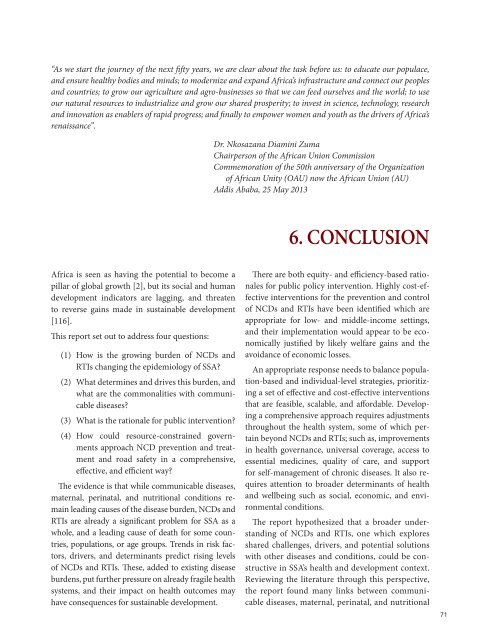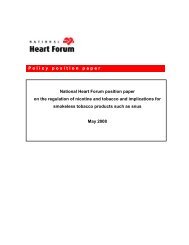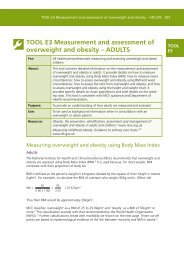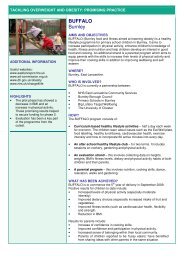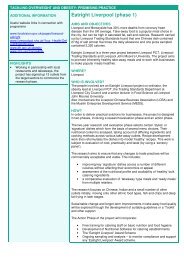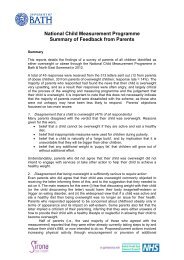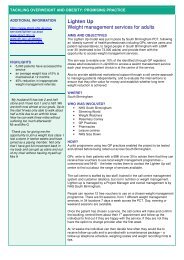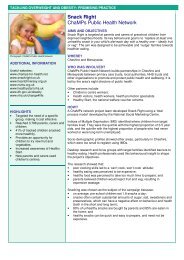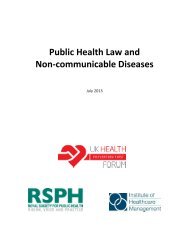The Challenge of Non-Communicable Diseases and Road Traffic ...
The Challenge of Non-Communicable Diseases and Road Traffic ...
The Challenge of Non-Communicable Diseases and Road Traffic ...
Create successful ePaper yourself
Turn your PDF publications into a flip-book with our unique Google optimized e-Paper software.
“As we start the journey <strong>of</strong> the next fifty years, we are clear about the task before us: to educate our populace,<br />
<strong>and</strong> ensure healthy bodies <strong>and</strong> minds; to modernize <strong>and</strong> exp<strong>and</strong> Africa’s infrastructure <strong>and</strong> connect our peoples<br />
<strong>and</strong> countries; to grow our agriculture <strong>and</strong> agro-businesses so that we can feed ourselves <strong>and</strong> the world; to use<br />
our natural resources to industrialize <strong>and</strong> grow our shared prosperity; to invest in science, technology, research<br />
<strong>and</strong> innovation as enablers <strong>of</strong> rapid progress; <strong>and</strong> finally to empower women <strong>and</strong> youth as the drivers <strong>of</strong> Africa’s<br />
renaissance”.<br />
Dr. Nkosazana Diamini Zuma<br />
Chairperson <strong>of</strong> the African Union Commission<br />
Commemoration <strong>of</strong> the 50th anniversary <strong>of</strong> the Organization<br />
<strong>of</strong> African Unity (OAU) now the African Union (AU)<br />
Addis Ababa, 25 May 2013<br />
6. CONCLUSION<br />
Africa is seen as having the potential to become a<br />
pillar <strong>of</strong> global growth [2], but its social <strong>and</strong> human<br />
development indicators are lagging, <strong>and</strong> threaten<br />
to reverse gains made in sustainable development<br />
[116].<br />
This report set out to address four questions:<br />
(1) How is the growing burden <strong>of</strong> NCDs <strong>and</strong><br />
RTIs changing the epidemiology <strong>of</strong> SSA?<br />
(2) What determines <strong>and</strong> drives this burden, <strong>and</strong><br />
what are the commonalities with communicable<br />
diseases?<br />
(3) What is the rationale for public intervention?<br />
(4) How could resource-constrained governments<br />
approach NCD prevention <strong>and</strong> treatment<br />
<strong>and</strong> road safety in a comprehensive,<br />
effective, <strong>and</strong> efficient way?<br />
<strong>The</strong> evidence is that while communicable diseases,<br />
maternal, perinatal, <strong>and</strong> nutritional conditions remain<br />
leading causes <strong>of</strong> the disease burden, NCDs <strong>and</strong><br />
RTIs are already a significant problem for SSA as a<br />
whole, <strong>and</strong> a leading cause <strong>of</strong> death for some countries,<br />
populations, or age groups. Trends in risk factors,<br />
drivers, <strong>and</strong> determinants predict rising levels<br />
<strong>of</strong> NCDs <strong>and</strong> RTIs. <strong>The</strong>se, added to existing disease<br />
burdens, put further pressure on already fragile health<br />
systems, <strong>and</strong> their impact on health outcomes may<br />
have consequences for sustainable development.<br />
<strong>The</strong>re are both equity- <strong>and</strong> efficiency-based rationales<br />
for public policy intervention. Highly cost-effective<br />
interventions for the prevention <strong>and</strong> control<br />
<strong>of</strong> NCDs <strong>and</strong> RTIs have been identified which are<br />
appropriate for low- <strong>and</strong> middle-income settings,<br />
<strong>and</strong> their implementation would appear to be economically<br />
justified by likely welfare gains <strong>and</strong> the<br />
avoidance <strong>of</strong> economic losses.<br />
An appropriate response needs to balance population-based<br />
<strong>and</strong> individual-level strategies, prioritizing<br />
a set <strong>of</strong> effective <strong>and</strong> cost-effective interventions<br />
that are feasible, scalable, <strong>and</strong> affordable. Developing<br />
a comprehensive approach requires adjustments<br />
throughout the health system, some <strong>of</strong> which pertain<br />
beyond NCDs <strong>and</strong> RTIs; such as, improvements<br />
in health governance, universal coverage, access to<br />
essential medicines, quality <strong>of</strong> care, <strong>and</strong> support<br />
for self-management <strong>of</strong> chronic diseases. It also requires<br />
attention to broader determinants <strong>of</strong> health<br />
<strong>and</strong> wellbeing such as social, economic, <strong>and</strong> environmental<br />
conditions.<br />
<strong>The</strong> report hypothesized that a broader underst<strong>and</strong>ing<br />
<strong>of</strong> NCDs <strong>and</strong> RTIs, one which explores<br />
shared challenges, drivers, <strong>and</strong> potential solutions<br />
with other diseases <strong>and</strong> conditions, could be constructive<br />
in SSA’s health <strong>and</strong> development context.<br />
Reviewing the literature through this perspective,<br />
the report found many links between communicable<br />
diseases, maternal, perinatal, <strong>and</strong> nutritional<br />
71


